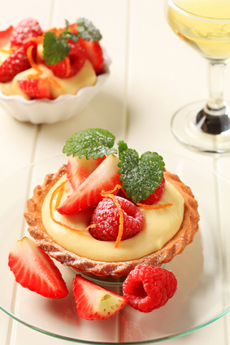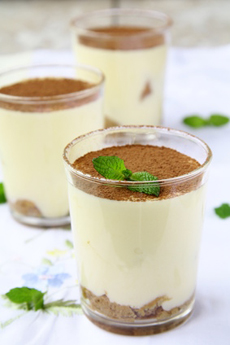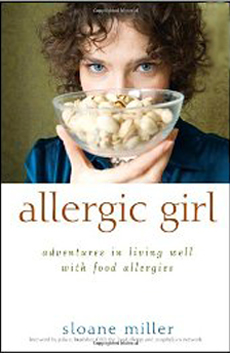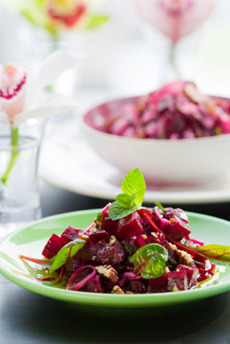|
One of the biggest misconceptions in making food choices is that all dietary fat is bad for you. Knowing the healthiest fats for cooking and eating makes food choice easy.
There are two types of fat.
Unsaturated fat is good for you (it helps lower LDL cholesterol, among other benefits).
Saturated fat is bad for you (it clogs arteries, among other things).
> Check out the different types of cooking fats.
UNSATURATED FATS: GOOD
Essential Fat
Essential fats such as Omega 3 are found in nuts and seeds. The body does not produce these fats, but they are essential to health. They can be found in good quantity in dark-fleshed fish, nuts (walnuts have the most alpha-linolenic acid, an important Omega 3) and seeds (in order of most nutrition: pumpkin seeds, hemp seeds, chia seeds, sesame seeds, flaxseeds, sunflower seeds [source]).
Monounsaturated Fat
The healthiest type of fat, monounsaturated fat is actually beneficial fat. It promotes heart health and might help prevent cancer and a slew of other ailments.
It’s best known for lowering “bad” LDL cholesterol levels without negatively affecting the “good,” artery-clearing HDL cholesterol. Avocado oil, canola oil, olive oil and peanut oil are rich in monounsaturated fat.
Whatever fats you’re using now (other oils, butter, lard): switch over as much as you can to monounsaturated fat.
Polyunsaturated Fat
A moderately healthy fat, polyunsaturated fat lowers LDL cholesterol but also reduces levels of HDL cholesterol. Polyunsaturated fat is the predominant type of fat in corn oil, safflower oil and soybean oil, among other vegetable oils. If you use these oils, trade up to a monounsaturated fat.
SATURATED FATS: BAD
Saturated Fat
Saturated fat is unhealthy fat and should be consumed in moderation. The body converts it into artery-clogging cholesterol, which greases the path to heart disease.
Saturated fat is mostly found in animal products and is solid at room temperature. It is the white fat you see along the edge or marbled throughout a piece of meat and is the fat in the skin of poultry. So when you look at that beautiful marbled steak, recall that beauty is more than just skin deep—in this case, it can go deep enough to kill you.
Saturated fat is also found in “healthy” animal products like milk (except for 0% fat milk) and foods made from milk (cheese, ice cream, yogurt), as well as in tropical oils such as coconut oil.
One should limit one’s intake of saturated fat from animal sources. Unfortunately, the American diet is full of it. The saturated fat from plant sources, such as coconut, are more benign.
Trans Fat
Is there anyone who hasn’t heard that trans fat is the worst type of fat? A problem created by Big Manufacturing (and now being corrected by food manufacturers, in response to consumer demand and local government mandate), most trans fat is produced by forcing hydrogen into liquid polyunsaturated fat (the process is called hydrogenation).
Margarine has traditionally been made this way. The process gives the fats a longer shelf life and helps stabilize their flavors.
When hydrogenated, the benign polyunsaturated fat is turned into trans fat, which is recognized by the body as a saturated fat. The body then converts the trans fat to cholesterol, which raises LDL levels and lowers HDL levels.
What’s worse, researchers have discovered that unlike regular saturated fat, trans fat disrupts cell membranes, upsetting the flow of nutrients and waste products into and out of the cell, and may be linked to reduced immune function and possibly cancer.
Trans fats do occur naturally in small amount in meat and dairy, but the primary source to worry about is in highly processed/artificial foods.
Anything called “partially hydrogenated” is a trans fat.
The USDA enables manufacturers who use trans fats to label their products “0 trans fat” or “contains no trans fat” if the amount is up to .5% trans fat per serving.
Focusing on the nutrition label does not give you the whole story. You need to read the label closely to ensure there are no partially hydrogenated fats.
IT’S YOUR CHOICE
Your health goal should be to make dietary fat choices from the monounsaturated fat group (avocado oil, canola oil, olive oil and/or peanut oil).
Just be aware that fat calories add up quicker. Fat is very energy dense when compared to carbohydrate and protein. It contains more than twice the calories per gram (fat has 9 calories/gram, carbs and protein 4 calories/gram). Thus, if you consume the same amount (in weight) of fat as protein or carbs, your calorie intake will be more than doubled.
Here are guidelines from the Harvard School Of Public Health:
|
|

[1] Good: Switch to monounsaturated fats: avocado oil, canola oil, olive oil and peanut oil. (photo © Zimmy Tews | Bigstock Photo).

[2] Not so good: All milk products—cheese, ice cream, milk, yogurt, etc.—contain not-so-healthful saturated fat, except for those that are labeled 0% fat (photo © FAGE).
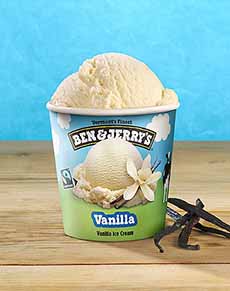
[3] Not so good: Ice cream is full of saturated fat, but you can buy lowfat and fat-free versions (photo © Dearborn Market).

[4] Good: Dark-fleshed fish, nuts, and seeds are full of essential fats (photo © Sea Delight).
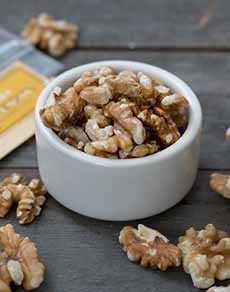
[5] Good: nuts and seeds. Walnuts are the healthiest nut. Here are the top seven best nuts to eat (photo © Good Eggs).
|
